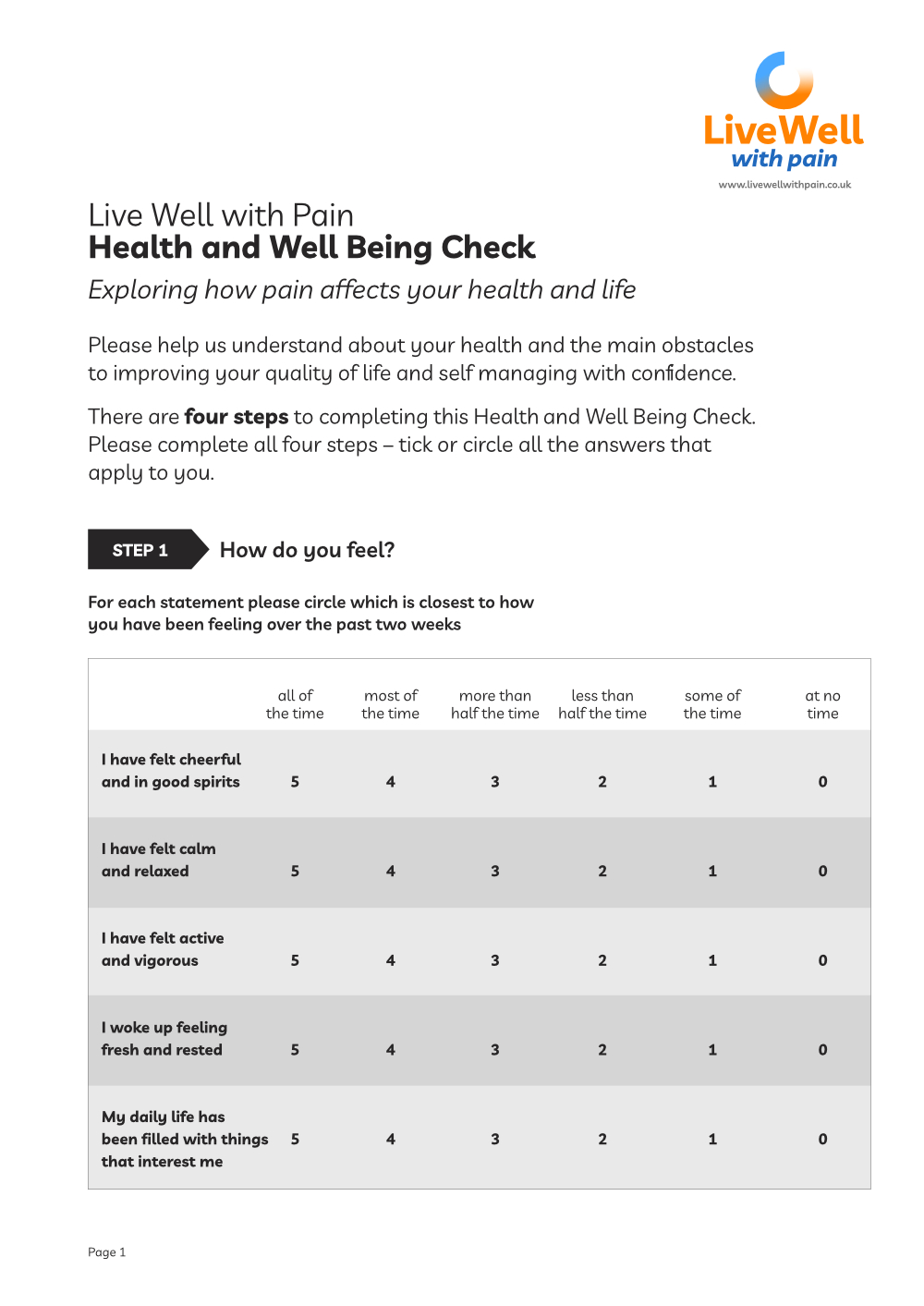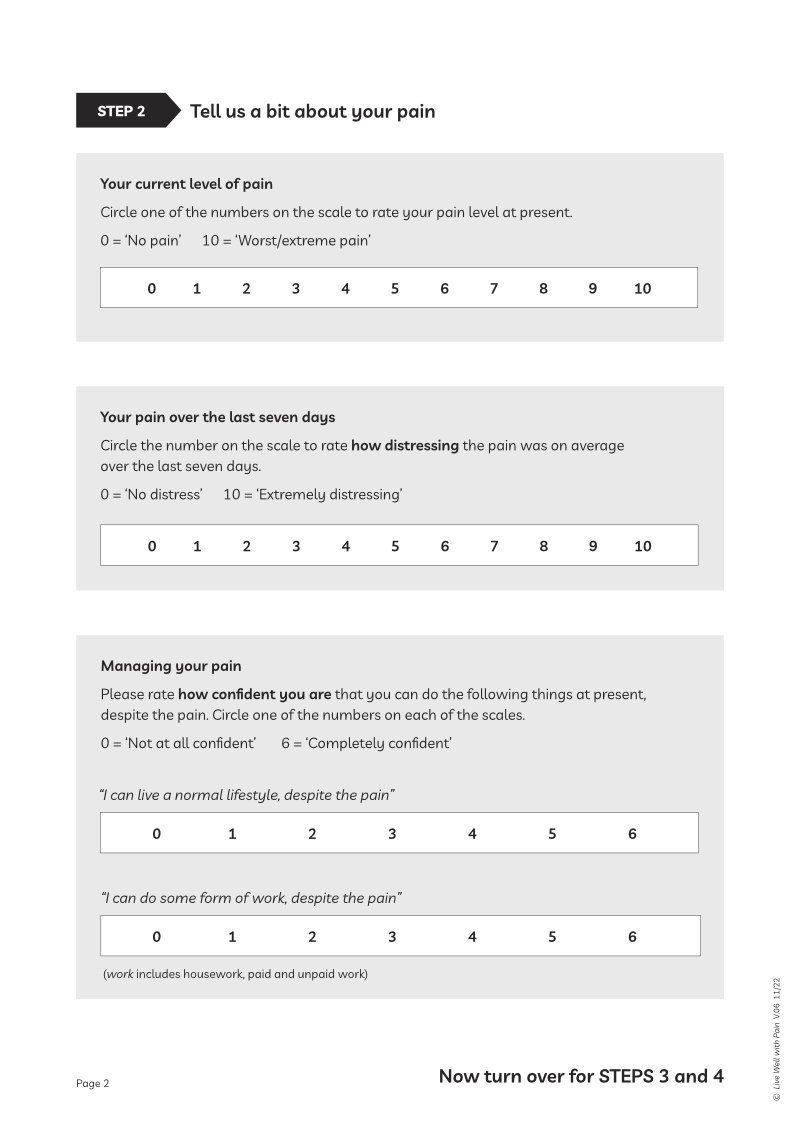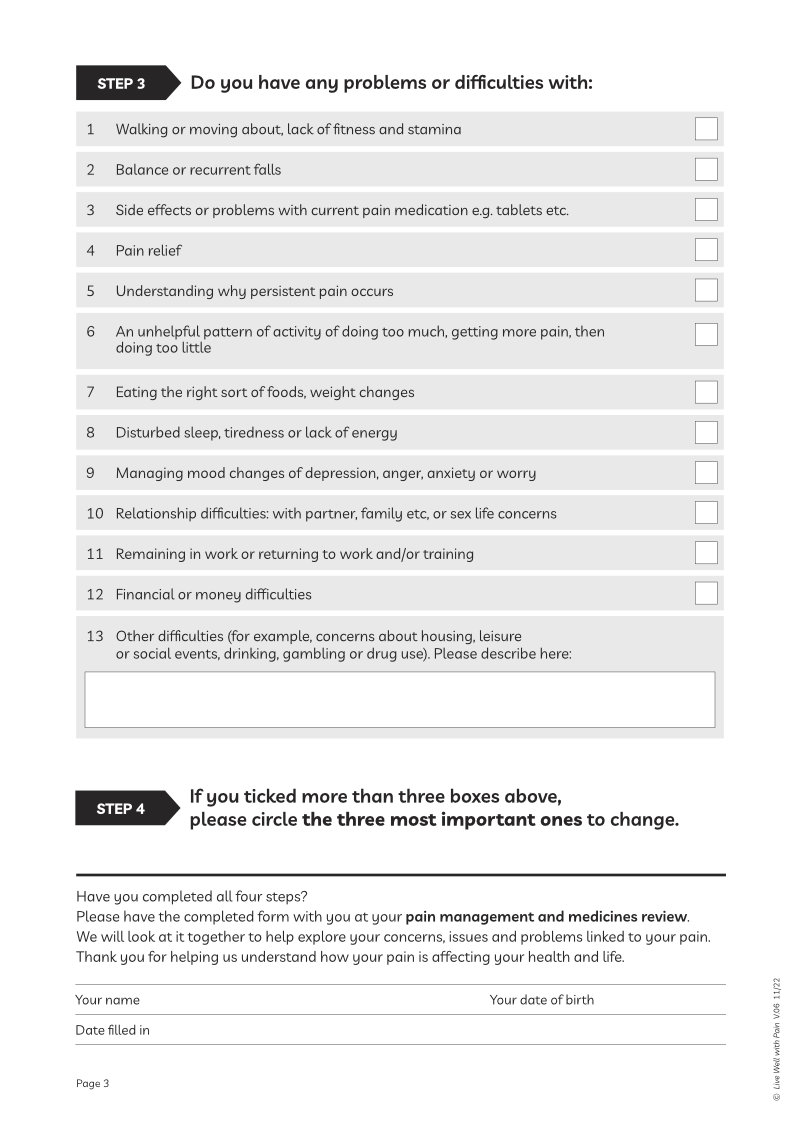How to use the Live Well with Pain Health and Well Being Check tool
The Live Well with Pain Health and Well Being Check tool is designed to help a person with pain begin a hopeful and positive active engagement in caring for their own health and wellbeing.
It is a self-completion, person-centred tool that can be shared easily with patients and clients. The data from this completed tool will help identify the actual current impact of chronic pain on the individual and their health. This in turn can help:
-
The management of the individual’s chronic pain in both condition management and medication reviews
-
A balanced commissioning approach, as the collated data from those with pain helps build evidence of the impact of pain on a local population
An explanation of The Live Well with Pain Health and Well Being Check tool
STEP 1 – How do you feel?
This first step for the person to complete uses the WHO Mental Well Being scale which asks about five emotional areas which may have affected the patient in the previous two weeks.
The scale has been validated for people with chronic pain and many other health conditions. It has been translated into more than 30 languages and is used across the globe.

STEP 2 – Tell us a bit about your pain
This step is about aspects of pain and the self- confidence to manage it. It covers pain intensity and pain distress levels. The higher the level of distress the greater the current and past emotional content is important to consider. It helps the person understand there is an emotional / trauma component of pain for a multitude of reasons.
Self confidence (Pain Self Efficacy Questionnaire – PSEQ 2). These two validated questions help identify the level of confidence the person has to self-manage.
The higher the score out of 12, the greater the level of confidence to self-manage. Low levels of confidence suggest more complexity in the impact of pain on the individual’s health and within the person’s context.
Often past and present emotional issues and life problems are responsible for lack of progress in pain self-management. This means the involvement of person-centred specialist pain management services may be beneficial in low levels of confidence, PSEQ scores < 4/12.

STEP 3 – Do you have any problems or difficulties with . . .
This is the health needs assessment component of the LWWP Health Check. It helps the individual to see the wider picture of the impact of pain on their health across 13 areas of need at the current time.
The more areas ticked or identified, the greater the impact on all aspects of health; physical, emotional and social role function.
This is a guide to the severity of the impact of pain on health and may indicate a need for a focused person-centred approach in collaboration with the person and other services where needed.
STEP 4 – The three most important things to change now
This final step guides the person to prioritise their current needs to form a focus for a consultation or review, thereby making best use of brief consultation time.
Patients or clients can also be directed to Ten Footsteps to Living Well with Pain, the online prgramme they can access when they sign up to this website.

Record your CPD
Live Well with Pain has partnered with Fourteen Fish, a UK company specialising in medical appraisal tools, to create a CPD recorder that is fully integrated into the site.